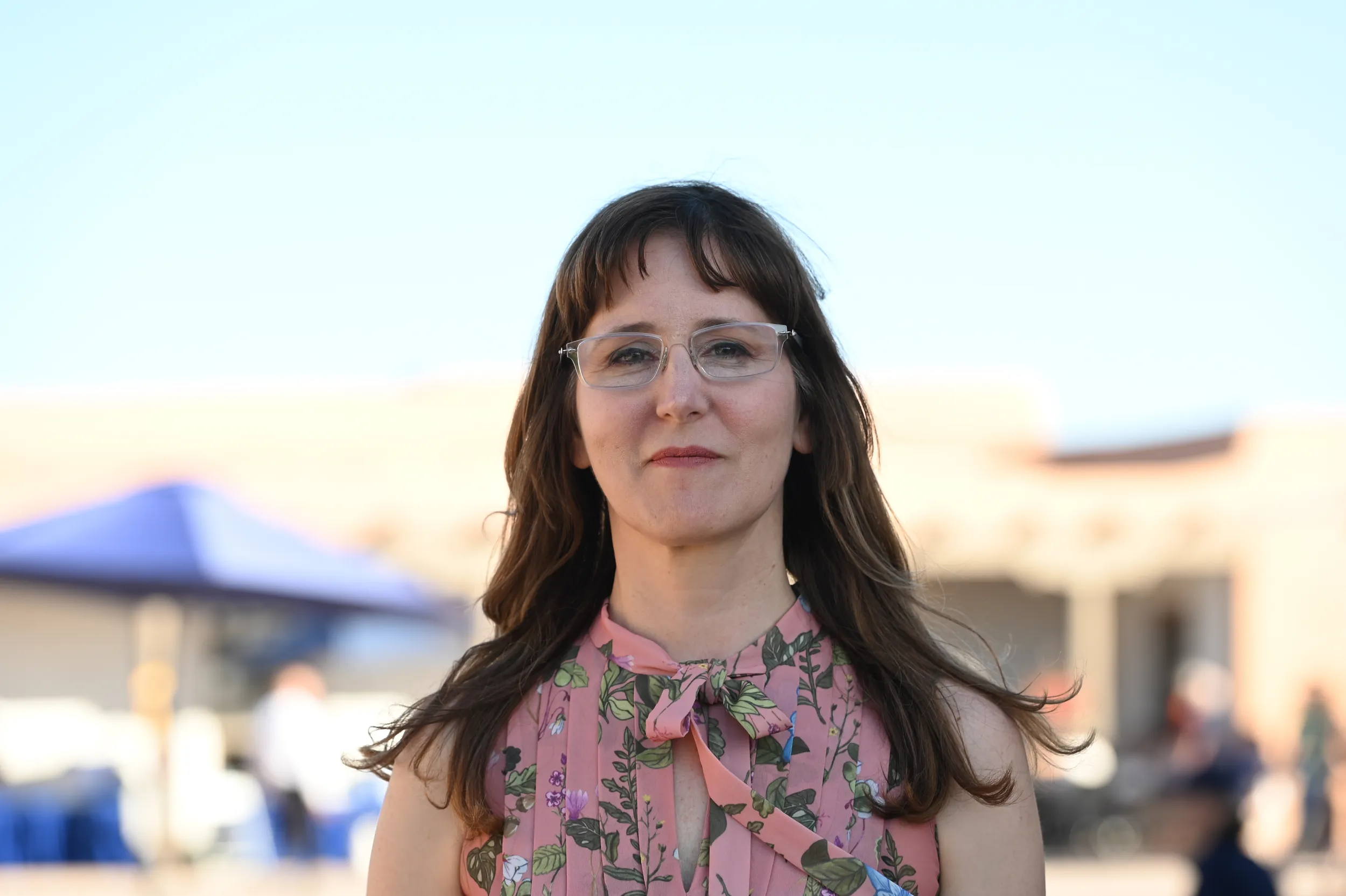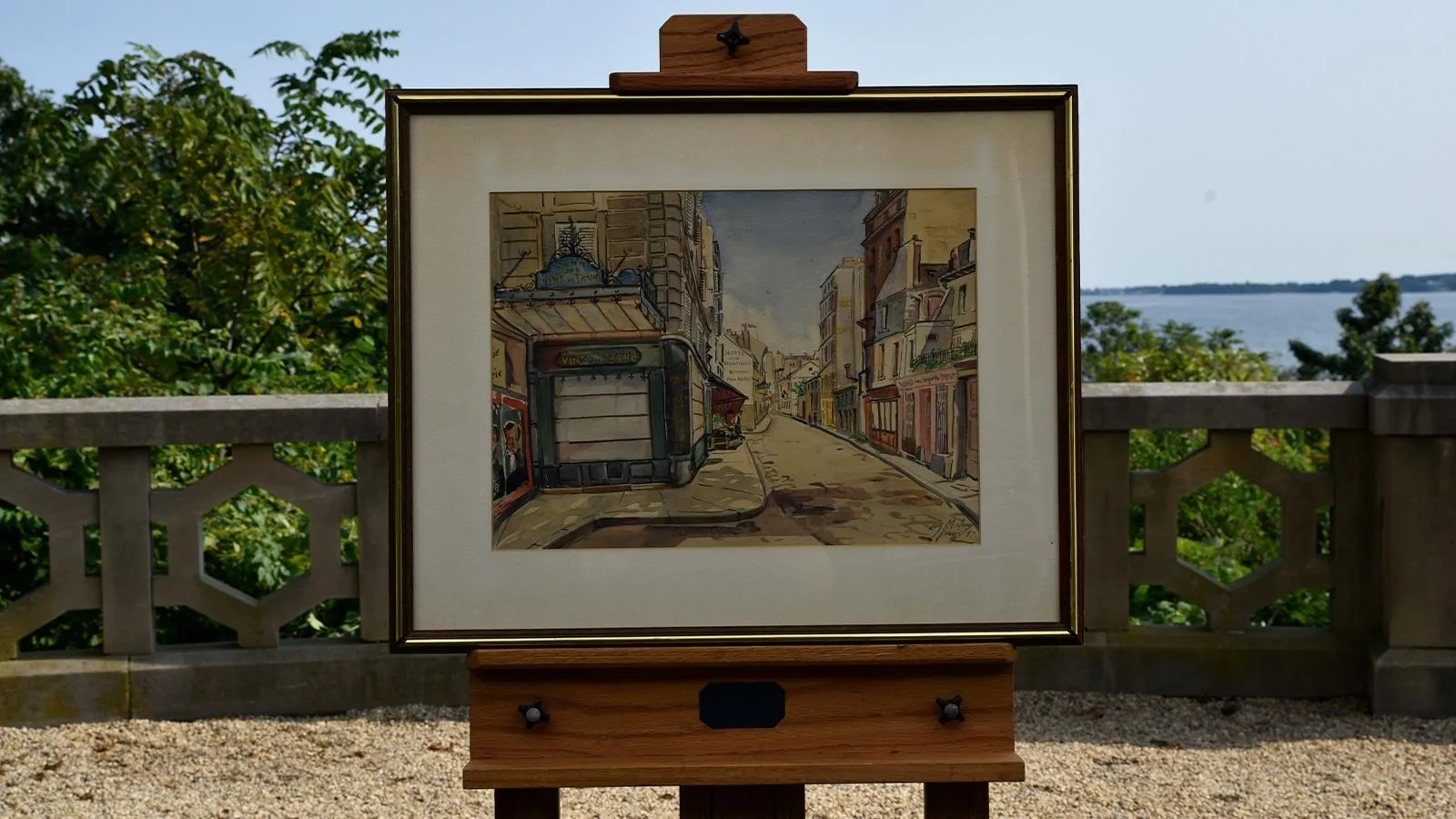GUEST: I've been antiquing since I was seven years old...
APPRAISER: That's great.
GUEST: ...and I have a particular love of New York City. So I was in a small antique shop about five, six years ago, and I saw this map on the wall, and it more or less spoke to me and said, "Take me home."
APPRAISER: (chuckles)
GUEST: And I didn't have the money to pay for it at the time. I had to pay for it over three installments. It was about $600 or so.
APPRAISER: It is in fact a map of what they call Novi Belgii, or New Netherlands. It's showing the region of the Northeast at a time when it was settled by the Dutch. In many ways, this is a Dutch propaganda map, because what they've done, the cartographer has compressed New England to be this tiny little area, and stretched out the Northeast to be this giant inviting space of opportunity. The Dutch, like the English, like the French, were looking for the Northwest Passage. They're looking for Asia. But what they find is this region. It wasn't a colonial endeavor for the Dutch. It was more of a monetizing effort. They were hunting beaver. The beavers in Europe were almost extinct at that time. And what they found was, through Indigenous trading connections and alliances, that the beavers were plentiful and the pelt itself was thicker than the European beavers, and they were used primarily for top hats. It was very lucrative. So what this map shows is how the beaver became the impetus for mapping the area, and they had to rely on Indigenous knowledge. So what you have is an incredible amount of Indigenous geography. Here you've got longhouses. So Indigenous architecture. Long Island was called Matouwacs, which is an Indigenous term for, uh, "land of the shells." Perhaps the most beloved aspect of this map is one of the earliest views of New Amsterdam, what we now know as New York. They had settled Lower Manhattan and they were hoping to keep it as an outpost. Of course, the rest is history, but this map shows a window in time when this area was being settled by Dutch people. You've got what we think to be Lenape Indigenous people looking in on the scene.
GUEST: Oh...
APPRAISER: To me, they're sensitively depicted, as, often in 17th-century maps, there'll be scenes of violence that were not necessarily true. We don't really know the author of the view. We don't really know who compiled the actual geography. Yes, it's attributed to Visscher because he was a publisher, but there's been questions about whether Visscher was the actual author of the map. Maybe, perhaps, it was Indigenous...
GUEST: Yeah.
APPRAISER: ...who really did the mapping.
GUEST: Who did the work?
APPRAISER: Which is what I like about including so much Indigenous information, and that's sort of forgotten over time. And when the British start mapping the area, a lot of the names are, are anglified. The original map was printed in 1650, '51. This map was so popular and so beloved that there were many, many, many issues printed.
GUEST: Mm-hmm.
APPRAISER: So the question remains, which issue do you have?
GUEST: Right.
APPRAISER: We can see it says "Nicholas Visscher," and below that, "nunc apud Peter Schenk." Peter Schenk purchased the plates. It means it was printed about 1729, maybe 1730. It's the last issue of the map.
GUEST: Mm-hmm.
APPRAISER: I would put a retail value on it between $5,000 and $6,000.
GUEST: (laughs) (laughing): That's very nice. Totally unexpected. Thank you. I love New York. (laughs)
APPRAISER: Me, too.
GUEST: There it is. In all its glory.



